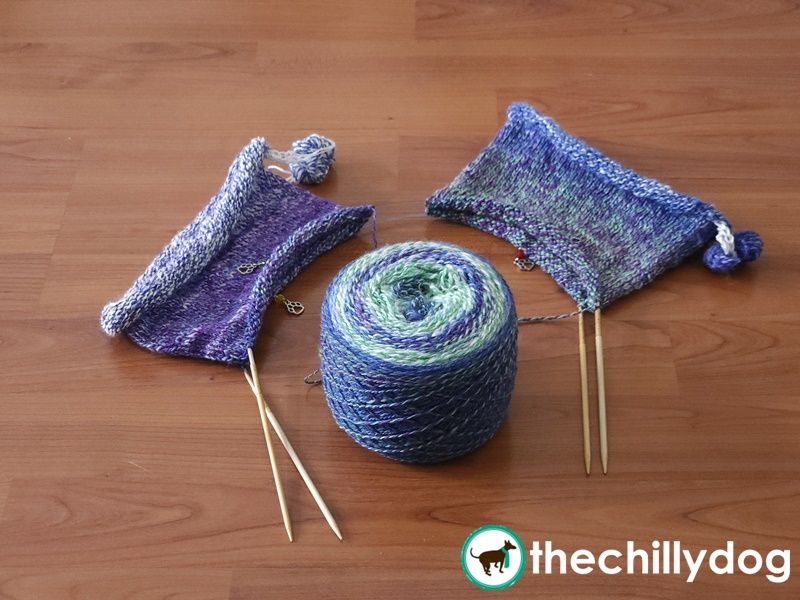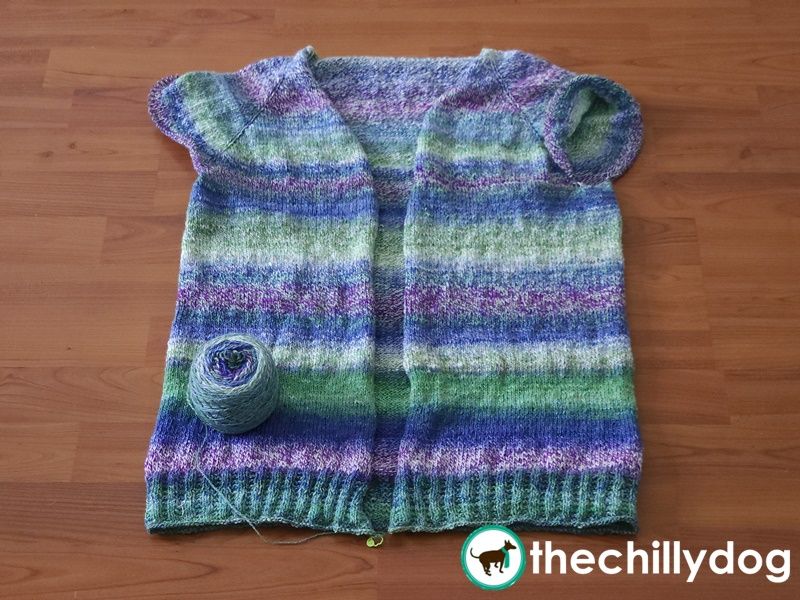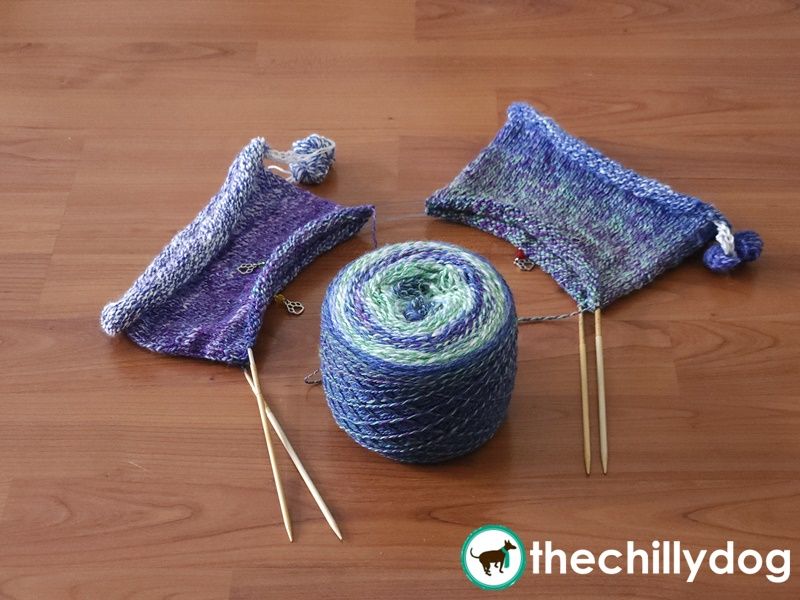Sleeve Island Getaway

I'm generally not a fan of seamless sweaters. Maybe it's because I learned how to sew garments before I learned how to knit them. Rather than launching into a rant about how seams provide structure and stability, let's just talk about the sleeves.
Knitting sleeves directly onto a seamless garment is problematic, especially long sleeves. It's hard to manage small circumference sleeve-knitting because of the added sweater bulk. It's especially difficult if you're trying to knit the sleeves two-as-a-time to ensure identical shaping. Eventually you land on Sleeve Island with one partially worked sleeve and one your dreading to knit.
Today, I'm escaping and I'll share a few of the strategies for my getaway.
Why I chose to knit a seamless sweater
Even though they're not my favorite, I'll admit there are advantages to seamless sweaters. I'm knitting a cardigan with hand spun yarn. It has a random, non-repeating, color gradient. Minimizing the number of sweater pieces makes the striping look more intentional.

Planning my escape from Sleeve Island
- Avoiding the bulk - Rather than knitting my sleeves directly onto the sweater, I'm going to knit them, then graft them in place.
- Embracing provisional cast ons - Using a wrapped, Turkish-style, provisional cast on at the sweater underarm means everything is ready for sleeve-grafting on the sweater side. (Although I will need to address the gaps on either side of the underarm.) Using a provisional crochet chain cast on at the top of the sleeves gives me a sense of security knowing the held waste yarn stitches won't escape as I knit.
- Minimizing yarn tails - Rather than weaving in the cast on yarn tail and both ends of a grafting yarn, I left a long tail when I cast on each sleeve and will use those tails to graft. (Two tails to weave in instead of six!)
- Matching, evenly spaced shaping decreases - Paired decreases along an imaginary "seam-line" are awkward. I'm using 4 decreases around the circumference to give a more fluid shape. Also, working the sleeves two-at-a-time means the shaping rounds for each sleeve will be in the same location.
- Two needles, not magic loop - I know I'm likely in the minority but I do not enjoy the magic loop method for small circumference knitting. I opted for two long circular needles rather than one.
- Oops... not enough needle tips - With only one set of interchangeable bamboo needles, I have two tips in each size rather than the four I'll need. The solution, one end of each cord has the appropriately sized tip (held in my right hand as I knit), the other end has a tip a size smaller (held in my left hand) to hold the previous round of stitches.
Confession Time
Everything was going well until I got about 30 rounds into the sleeves. Using handspun, there's no way to perfectly match the striping of each sleeve, but it was a little too far off. I took one sleeve off my needles and re-knit it, starting with a different yarn cake (or rather the opposite end of the other sleeve's cake). I was quickly back on track for my two-at-a-time sleeves.

Needles: skacel by addi Click Bamboo interchangeable needles

There's more to explore in the Learning Library!
